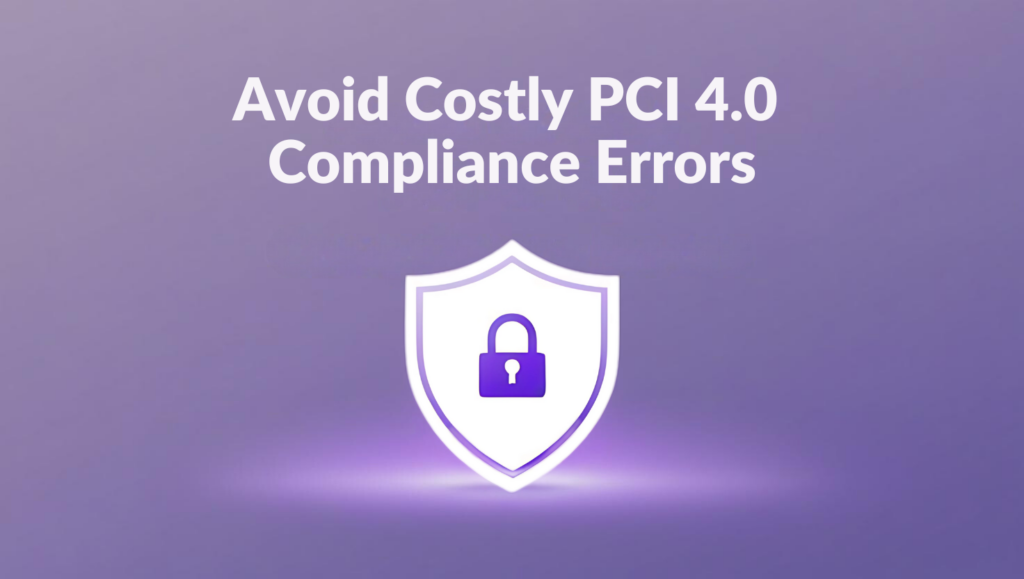Top 3 Mistakes PCI DSS SAQ-D Service Providers Are Making in 2025 That Will Knock Them Out of PCI DSS 4 Compliance
PCI DSS Compliance for SAQ-D Service Providers and Merchants is more critical than ever. Despite widespread awareness of the updated requirements, ot appears that over 90% of service providers remain unaware that they must implement new technical measures for the iFrames (with payment functions loaded) on their customers’ payment pages to meet Requirements 6.4.3 and 11.6.1. For service providers operating under SAQ D, avoiding these pitfalls is essential to stay on the right side of compliance and prevent possible penalties. Here are the top three mistakes you must avoid.

1. Underestimating the Scope of iFrame Compliance for SAQ D PCI DSS
Many service providers assume that because they don’t directly handle card data, their iFrames are automatically out of scope. However, under PCI DSS 4.0, that’s simply not the case. Any iFrame involved in payment interactions must be monitored and documented as a key component of iFrame Security for SAQ D PCI DSS compliance.
Why This Is a Problem
- Blind Spots: If you’re not tracking iFrame code changes, malicious scripts can slip in undetected.
- Audit Failures: QSA will expect to see proof that you’ve inventoried and secured all iFrames dealing with cardholder data.
Pro Tip: Develop a standardized and automated process for authorizing and inventorying every iFrame you load on every unique payment page.
2. Ignoring Real-Time Monitoring for iFrames
Under Requirement 11.6.1, it’s no longer enough to run periodic scans or rely on static code reviews. You need ongoing, real-time monitoring that can spot suspicious activity as soon as it happens—whether it’s a script injection or an unauthorized change to your iFrame content.
Why This Is a Problem
- Delayed Detection: If you only review iFrames quarterly, a hacker could compromise your site for months before you notice.
- Missed Alerts: Without continuous monitoring and automated alerts, you won’t know there’s an issue until it’s far too late.
Pro Tip: Integrate a monitoring solution that compares live iFrame behavior against a known “good” baseline. Any deviations—like new scripts or changes in data capture—should trigger immediate alerts for your security team to investigate.
3. Failing to Keep Ongoing Proof of Compliance, Making Them Unable to Provide Adequate Attestation to Clients
Even the best technical measures are only half the battle. Under PCI DSS 4.0, a once-a-year or quarterly vulnerability scan is no longer sufficient—service providers must maintain proof of compliance on at least a weekly basis or according to the targeted risk analysis defined in Requirement 12.3.1. This means your documentation must accurately reflect how you handle iFrames within your SAQ D PCI DSS environment, and it must be reviewed and updated far more frequently. If your records lag behind your actual processes (or don’t exist at all), you’ll be on shaky ground when auditors—or your clients—ask for evidence that you’re adhering to PCI requirements.
Why This Is a Problem
- Incomplete Evidence: Auditors will ask for ongoing proof that you’re following your documented procedures. If you can’t provide up-to-date logs, scans, and policy reviews, you’re non-compliant.
- No Clear Roles: Without a formal process for continuous monitoring and reporting, accountability falls through the cracks when changes are made or alerts are triggered.
Pro Tip: Don’t rely on old-school, once-a-year scanning routines. Make sure your policies require—and document—regular scanning and proof of compliance at least weekly or based on your risk analysis. That way, your team is always on the same page, and you can provide real-time evidence of compliance whenever an auditor or client requests it.
Achieving SAQ D PCI DSS Compliance: Final Thoughts
SAQ D PCI DSS 4.0 demands that service providers take iFrame security seriously—no more “set it and forget it.” From maintaining an inventory of iFrames to implementing real-time monitoring and keeping airtight documentation, these steps aren’t just suggestions; they’re mandatory. By avoiding the three pitfalls above, you can protect your organization from costly breaches and ensure you’re ticking all the right boxes for PCI 4 compliance. And while the road to compliance might feel a bit daunting, the peace of mind you gain is worth every bit of effort.